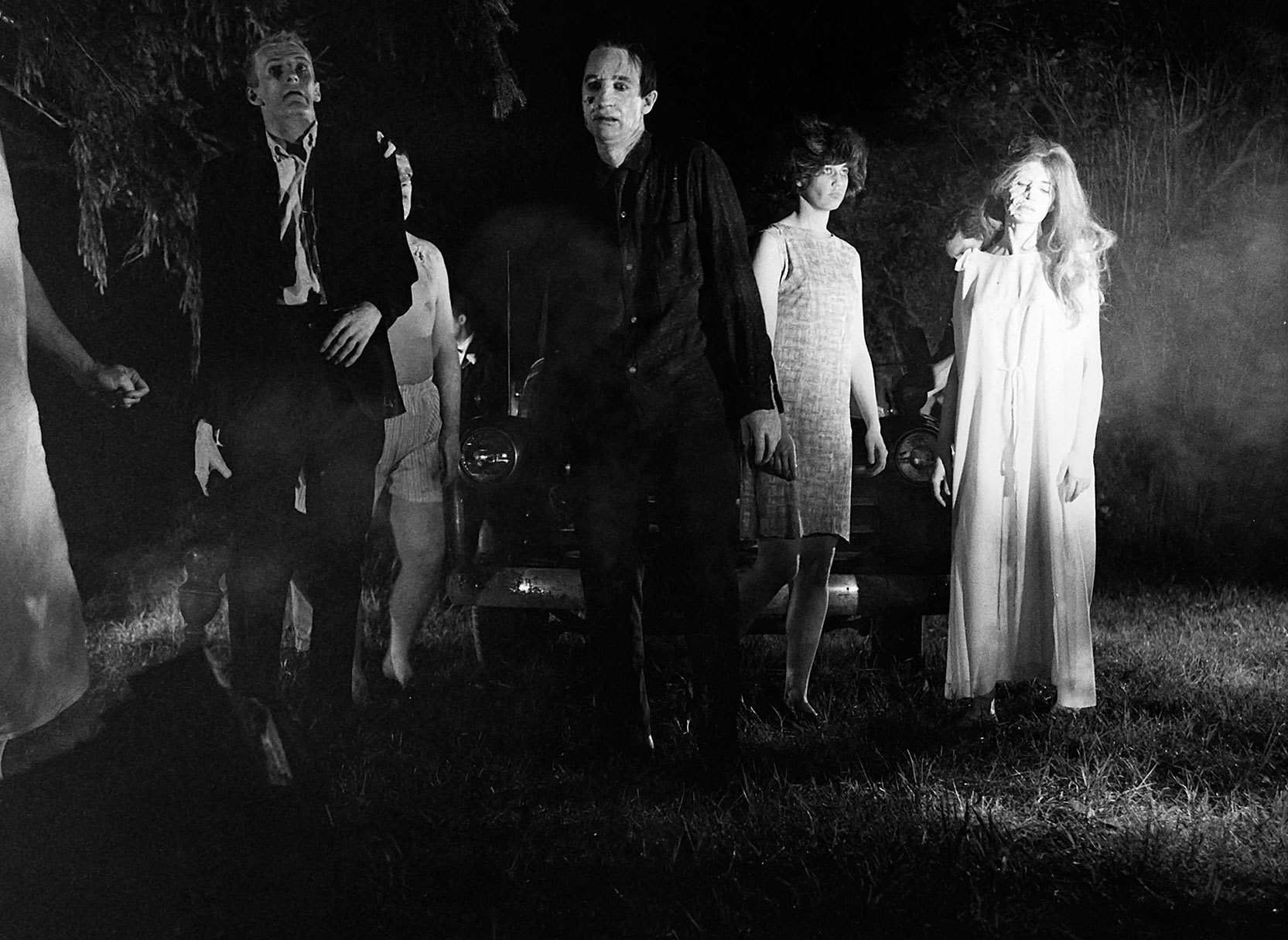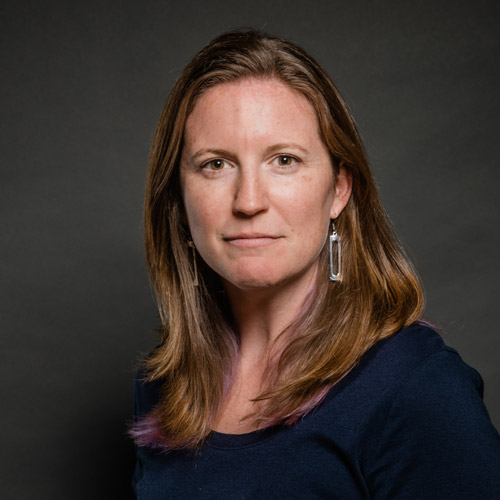Meet the BU Professor Building an Online Zombie Movie Archive
Maia Gil’Adí, BU assistant professor of English and Latinx literature, is building an online zombie movie archive

Maia Gil’Adí, a College of Arts & Sciences assistant professor of English and Latinx literature, delves deep into the roots and associations of zombie lore—but she also sees the fun in the horror genre.
Don’t Open. Zombies Inside.
Maia Gil’Adí, a BU assistant professor of English and Latinx literature, is building an online zombie movie archive
It’s that decomposing time of year! Amid brown leaves and rotting pumpkins, reanimated corpses feasting on human flesh are once again the toast of the town.
We’re talking zombies, the horror fan’s favorite flash mob, popping up on screens everywhere, in graphic novels and death metal songs, and, ding-dong, even on your front doorstep demanding trick-or-treat candy.
The zombie “is a thing just full of desire. It is pure mouth, right?” says Boston University’s Maia Gil’Adí, a specialist in Latinx literature and culture—and in horror and violence in fiction. “It is all consumption. It reproduces itself in its own image. It’s kind of godlike in a way. It’s making itself over and over again, by consuming its own kind.”
These ravenous zombies are of course entirely fictional (Narrator’s voice: “We hope!”). But if one day a horde of the undead are seen staggering across the BU Beach in the direction of the George Sherman Union, it is Gil’Adí that the provost’s office will call for advice.
A College of Arts & Sciences assistant professor of English and Latinx literature, Gil’Adí is the founder of The Zombie Archive, an online labor of love where she is building a detailed timeline of zombies on the big screen, from 1932’s White Zombie, with Bela Lugosi, through 2014, year of the immortal cinematic classic Zombeavers. One of these days, Gil’Adí says, she’ll find time to catch up to the present.
Gil’Adí makes contemporary horror part of her off-hours enjoyment as well as one of her areas of scholarly interest. She’s currently working on a book project, tentatively titled Doom Patterns: The Aesthetics of Violence and Reading Pleasures in Latinx Speculative Fiction. In October, she screens a different horror film at home every night.
“Why is it that we return to these horrific things?” she says. “There’s something pleasurable about getting scared, about both participating in it and keeping it at a distance. But, to me, it’s also the paradox of what it means to turn this horrific violence—that, in many cases, is excessive and repeating—into really pleasing aesthetic forms, both writing and film, that makes us want to consume it over and over again.”
Her favorites? “I love Juan de los Muertos [Juan of the Dead], which is a Cuban homage to Shaun of the Dead, but is also a sardonic critique of post-revolution Cuba,” she says. “I also love 28 Days Later; I still remember going to the movie theater to see it and thinking, ‘Whoa! I had no idea zombies could be so fast!’”
Her studies in Latinx literature and culture help her understand the original zombie myth, which she says originated in Hispaniola’s Saint-Domingue—now Haiti—as a spirit that could possess a human body. It came to signify a person who could be forced into slave labor through a voodoo spell. After Haiti gained its independence in 1804, the belief that its revolution would spill over to the rest of the Americas became prominent in the 19th century.
Early depictions of the zombie portray a Caribbean replete with undead Black bodies that threatened the United States with racial infection through the goods they produced. The racism is obvious. An infamous 1929 film travelogue by William Seabrook spread the zombie concept in the US. And for several decades afterward, the zombie served as an exotic and scary “other,” used in various forms by Hollywood.

Director George Romero reinvented the zombie in his ultra-low-budget 1968 shocker Night of the Living Dead, setting the modern paradigm: hordes of the dead rise from the grave, hungry for living human flesh, besieging a small group of humans battling for survival. Romero’s 1978 Dawn of the Dead enjoyed a much bigger budget, as its zombies went to the mall, and set in motion decades of gruesome imitators with often far less inventiveness. Zombie comedies hit their peak with 2004’s Shaun of the Dead starring Simon Pegg and 2009’s Zombieland, with Woody Harrelson and a very dead-looking Bill Murray.
But what really made zombies a cultural phenomenon (almost) as ubiquitous as Taylor Swift was the cable series The Walking Dead (RIP, but living on in spin-offs and sequels). Based on an acclaimed comic book series, the show was an enormous success for the AMC cable channel and made a star of Andrew Lincoln as sheriff Rick Grimes, plus Danai Gurira, Norman Reedus, and several other cast members.
Movie monsters have always been metaphors, subconscious or otherwise. Frankenstein’s monster gives form to the fear of unbound science. Dracula is both a sexualized threat and an anti-Semitic stereotype—Shylock with fangs. The Wolfman is having a rough puberty.
But from Romero forward, Gil’Adí says, the zombie has been the most malleable of monsters. Zombies can be seen as representing everything from 1960s race riots and civil unrest in Night of the Living Dead, to consumerist conformity in Dawn of the Dead, to fear of climate change or the diminishment of America’s central role in the world in The Walking Dead.
“My partner always gets mad at me when I say this,” Gil’Adí says, “but I tell him that I honestly think that [The Walking Dead] is this weird, ‘the South will rise again’ fantasy [for the Obama era]. I think it is, in a way, like a white supremacist desire for control.”
Zombies can also be a reminder of our own animal nature and mortality. The zombie, she says, “has all the things that are supposed to stay inside of our body on the outside: the guts, the piss, the shit, the vomit. It’s showing us our own decay as it’s moving around. So, it’s like a reminder of like, oh, no, that’s me. That’s what we are.”
It’s showing us our own decay as it’s moving around. So, it’s like a reminder of like, oh, no, that’s me. That’s what we are.
And the fact that the zombies are dead (before they’re undead) loosens certain strictures. “In the opening of The Walking Dead, Rick wakes up in the hospital and puts on his sheriff hat. He’s the good guy. And then he shoots that little girl who you think at first is this innocent kid, but turns out to be a zombie. In what other place would it be OK to feel joy in a child being murdered on screen? Because she’s a zombie!”
Gil’Adí’s scholarly interest in zombies and horror began as an undergrad at George Washington University, when a class on literature of the Americas featured everything from slave narratives to “weird Gothic fiction,” and the reading list included acclaimed writer Colson Whitehead’s stab at a zombie novel, 2011’s Zone One. Also in the works at The Zombie Archive—or should we say, clawing their way out of the dirt and up into the air—are archives of zombie literature and visual art, which Gil’Adí has barely begun.
Might we also suggest a zombie music archive? It could feature “I Walked with a Zombie” by Roky Erickson and its REM cover, “Eye of the Zombie” by John Fogerty, and the collected works of Haverhill, Mass., native Rob Zombie.


Comments & Discussion
Boston University moderates comments to facilitate an informed, substantive, civil conversation. Abusive, profane, self-promotional, misleading, incoherent or off-topic comments will be rejected. Moderators are staffed during regular business hours (EST) and can only accept comments written in English. Statistics or facts must include a citation or a link to the citation.